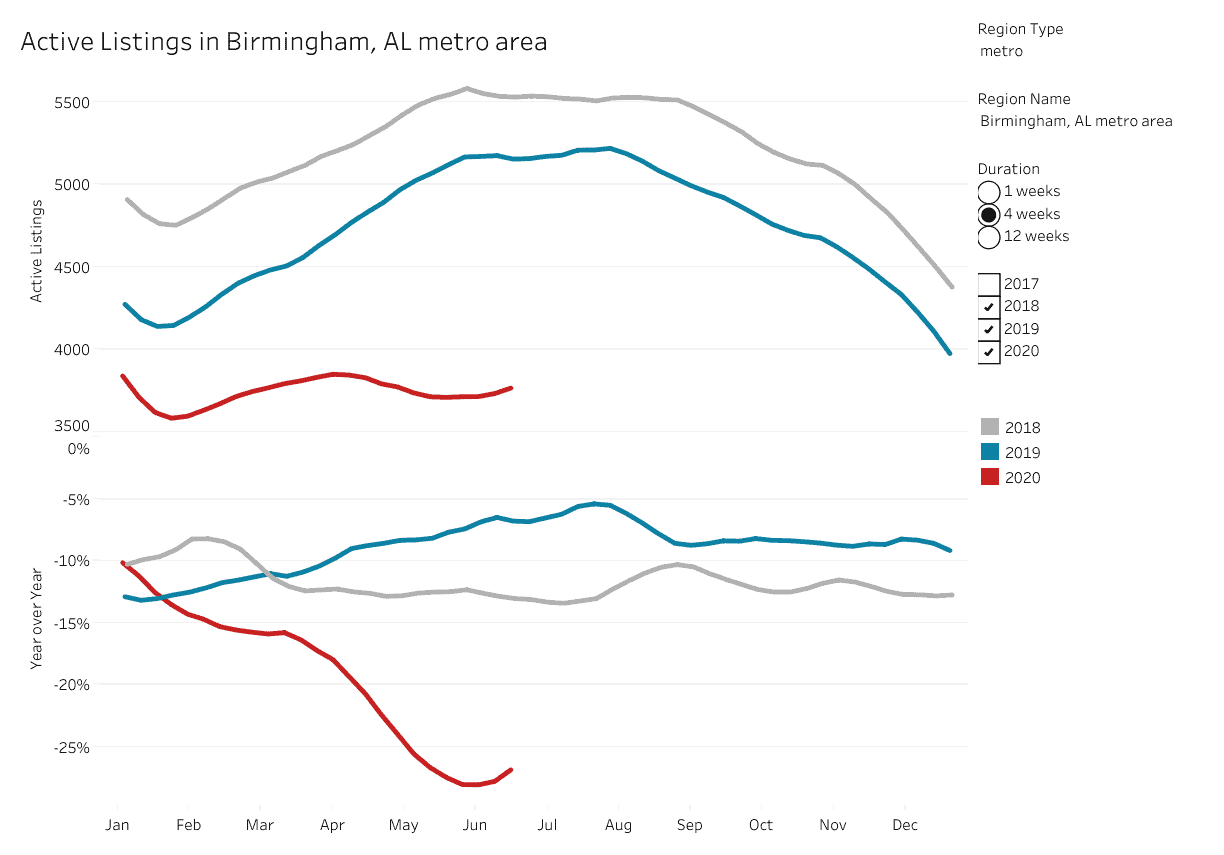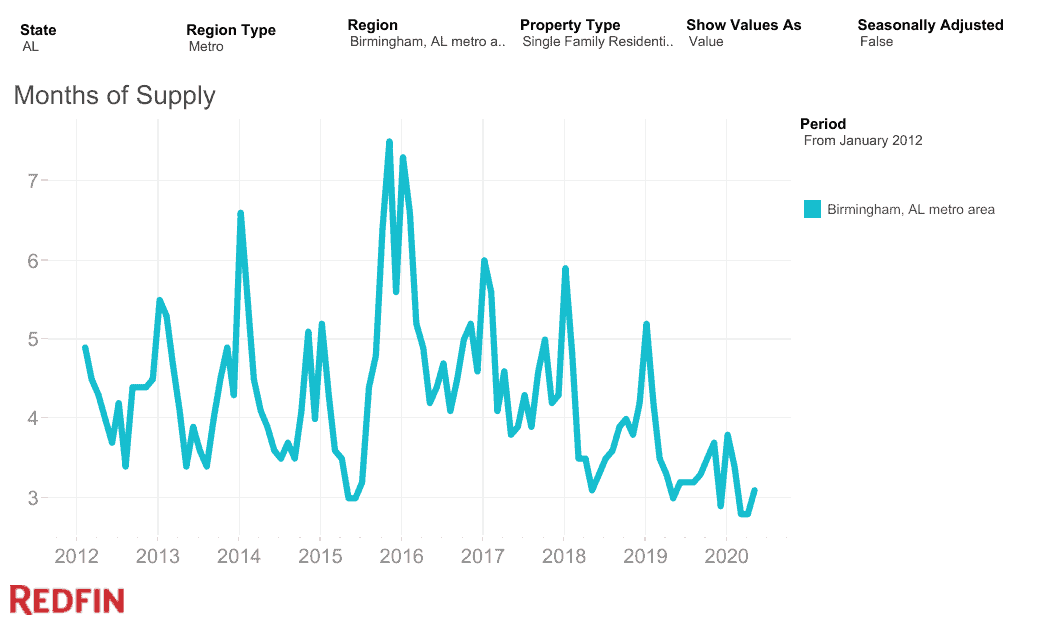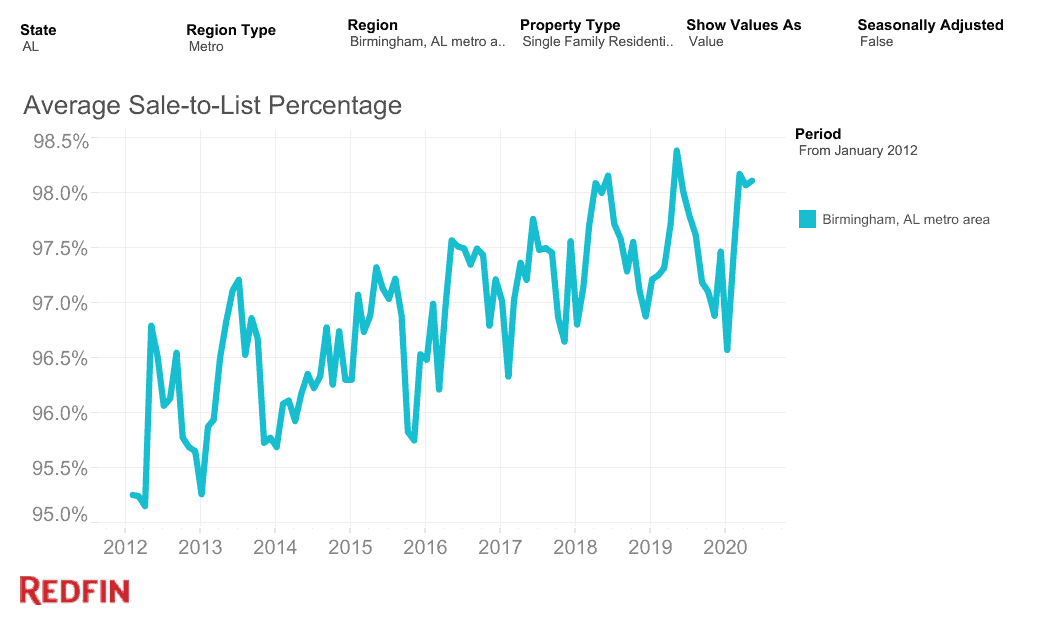Is Birmingham Experiencing An Increasing Real Estate Market?

Are we suppose to have an increasing real estate market during a pandemic? It’s difficult to say since pandemics aren’t that common.
We really can’t compare it to the last pandemic that occurred back in 1918 because our country and the economy are totally different now than it was back then.
The current housing market recovery is being described as a “V” because it took a sharp decline and then started to recover again rather quickly, hence the “V” shape. Now we have the possibility of what looks like a second wave of COVID-19.
What can we expect now? Will the “V” continue its climb back to pre-COVID days or will we experience another “V”? There are many experts that are predicting a “W”, which is another sharp decline and subsequent increase.
It’s difficult to say exactly what will happen as things unfold, however, we can discuss what is currently happening in many areas across the country and that is a very hot real estate market.
In my market of Birmingham, Alabama we are seeing what is best described as an increasing real estate market. But what exactly does this mean?
As an appraiser, we are taught to study the market like a detective might study a case they are working on. This helps us to develop an opinion of value for a house or other type of real estate we are appraising.
Today I thought I would walk you through some of the different metrics appraisers study to determine if a market is increasing and how we consider that when completing an appraisal and developing an opinion of value.
The graphs included are courtesy of Redfin. If you are from another area of the country and would like to see what your area looks like click HERE.
1) Inventory levels – Supply and demand is at the heart of what moves the real estate market so the supply of homes, or inventory, is very important to look at. As you probably know, when the supply of something decreases or is less than expected, and demand remains steady of increases then prices will rise.
As you can see in the graph the current inventory of homes in the Birmingham metro area for 2020 is at its lowest level for the past several years. This decreased supply and strong demand are pushing prices up.
2) Is the market in balance and how many months of inventory do we have? – The number of months of inventory is a direct measure of the rate of sales compared to the amount of inventory available. It is calculated by dividing the number of active listings by the number of homes sold in a month.
Different areas vary but anywhere from 4-6 months is considered a balanced market. Anything less than this would be a seller’s market because there is not enough inventory to satisfy demand and anything more than 7 months would be a buyers market because there is too much inventory.
The data from Redfin, shown in the graph below, indicates that the Birmingham area has about 3 months of inventory which would be a seller’s market. In this type of situation, sellers have more leverage and can ask more for their home because buyers do not have a lot of choices.
3) Days On Market (DOM) – The days on market is a measure of how long it takes to sell your home. A hot market would allow you to sell your home quickly if it is priced right. A slower market would take longer to sell.
So if your home is priced to the market based on recent and similar comparables the lower DOM is an indicator of an increasing market.
The Birmingham metro area has seen a decline since 2016 in DOM which points to an increasing market. The trend that I have seen over the past several months is for homes to be selling in days after listing rather than months.
This may not be true for every area, however, it is for the hot areas.
4) Multiple offers – A growing trend that I have seen in the Birmingham area post-COVID-19 is the increase in multiple offers on homes. This only makes sense because of the lack of inventory.
A buyer’s decreased choices in housing have resulted in bidding wars occurring. Buyers are willing to increase their offering price to win the listing.
Unless they are paying cash this may not always work out for them. When buyers increase their offer to an unrealistic amount the home may not appraise so they need to keep this in mind and be willing to make up the difference between the offer amount and the appraised value if there is a gap between the two.
A knowledgeable buyer’s agent will be able to look at the comparables to identify an offer that is too high which will guide the buyer in the right direction when making an offer.
An increase in multiple offers is another stat to consider when trying to determine if the market is increasing.
5) Sale price to list price ratio – The sale price to list price ratio is a measure of the percentage difference between the final sale price and the list price. The higher the percentage the closer to the list price the home sold.
There are multiple reasons this percentage could vary. If a home is way above market and it requires multiple price reductions there could be a big gap between the two, however on the flip side if the home is priced below market it could sell for the exact list price or even higher.
In regards to the temperament of the market, in an increasing market where there is limited inventory and prices are increasing, the sale price to list price ratio will be closer to one or even more than one for homes that sell for more than the list price.
It is not necessary for all of these stats to show an indication of an increasing market but the more indicators there are, the more proof we have of the upward direction.
Sellers and agents, like appraisers, can look at these statistics to gauge the temperature of the real estate market in order to help in pricing. Even though we may be in an increasing market it is not a good idea to price yourself out of the market.
While buyers may be willing to offer a higher amount than normal that does not always mean that it will appraise for the contract amount. The offering price must be weighed against the recently sold homes and current active inventory to arrive at a market supported value.
Question
Do you have any additional questions about how to recognize an increasing market? If so leave a comment below or let me know what is happening in your market. I’d be interested in hearing about what is occurring in other areas.




As a recent residential real estate investor, this is very helpful! We are often sold the basic supply and demand jargon but you do a great job of breaking it down into manageable factors. Thanks!
Thanks, I’m glad it was helpful.
This is wonderful information about tracking a real estate market. Worth the read for Realtors as well as those interested in the real estate market.
Thanks.